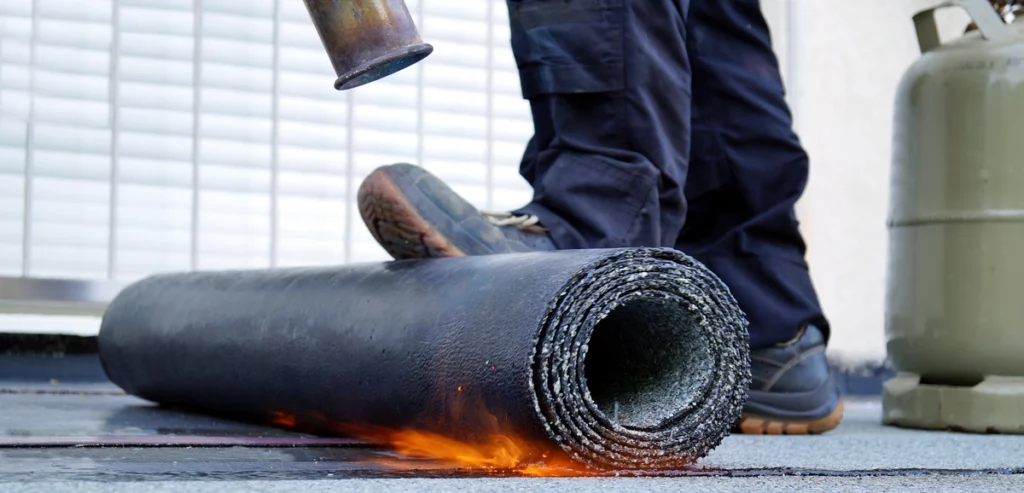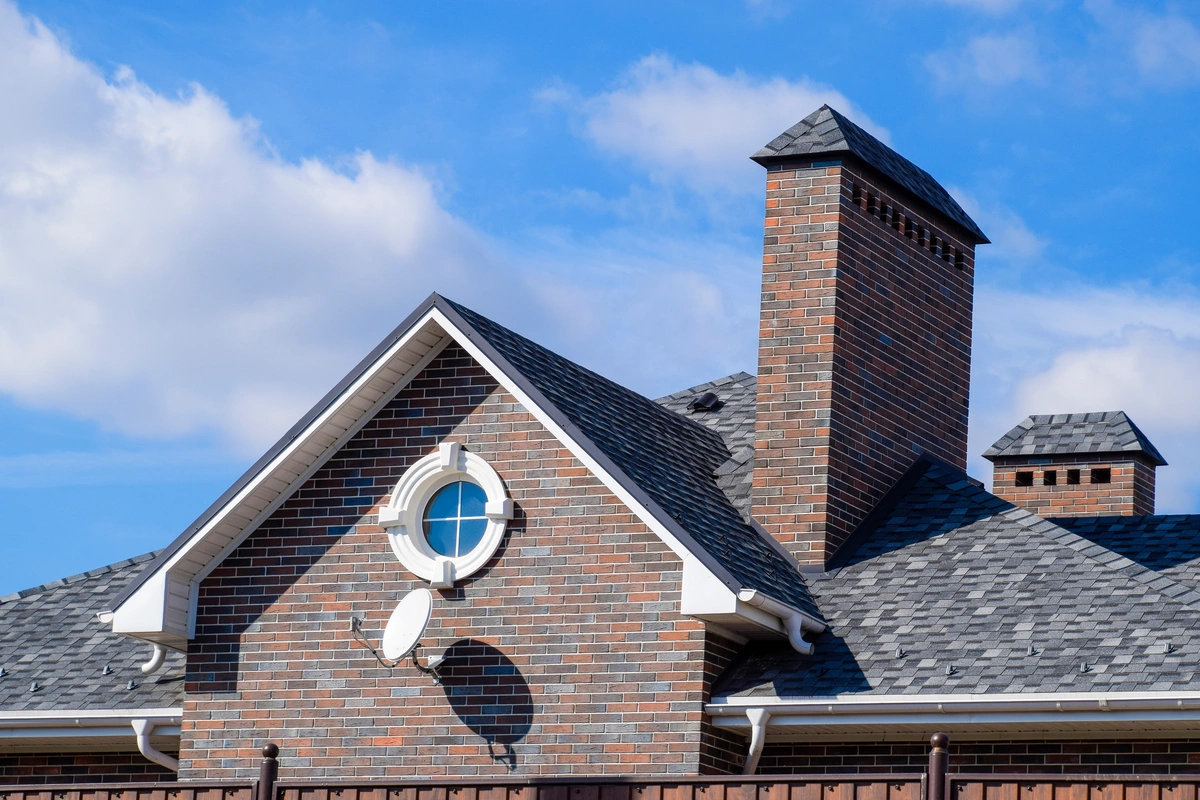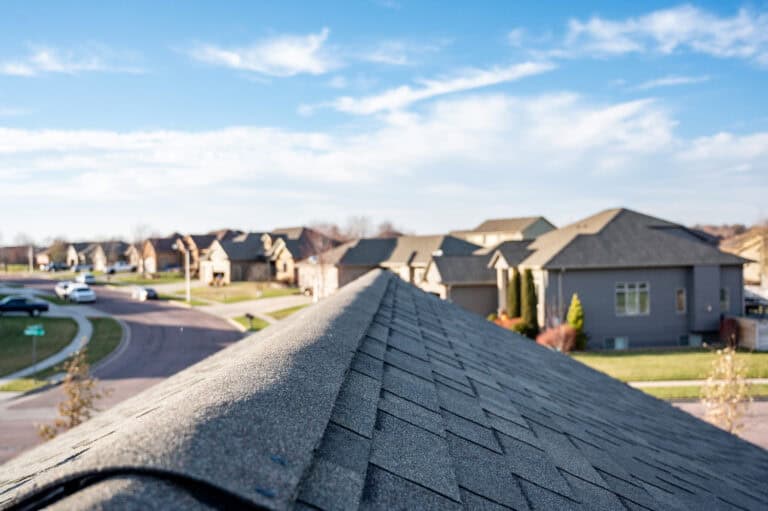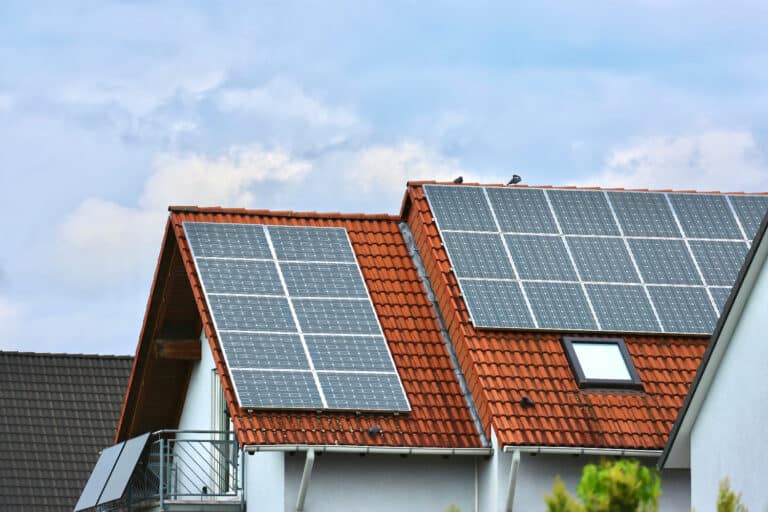Choosing the correct roofing material can be a daunting task. Modified bitumen roofing, known for its durability and versatility, is becoming an increasingly popular choice in many households.
This article provides detailed insights into the benefits and drawbacks of a modified bitumen roof, equipping you with all the necessary information to make an informed decision for when it’s time to upgrade your flat roofing system.
Stay tuned as we delve into everything about this roofing, like its:
- High-traffic viability potential 🚦
- Heat absorption issues 🥵
- Compatibility with roofing compounds 🛖
Pros of Modified Bitumen Roofing

Modified bitumen roofing has multiple plies and greater thickness, making it highly durable in high-traffic areas.
Multiple Plies and Greater Thickness
Modified bitumen roofing stands out due to its multiple layers and enhanced thickness. Each ply adds strength and provides a sturdy barrier against severe weather conditions, adding resilience that homeowners value.
This increased thickness contributes to its durability, making it an excellent choice for areas exposed to heavy foot traffic or extreme environmental factors. With added polymers enhancing asphalt’s properties, the results showcase improved performance in low-sloping roof systems.
The combination of multiple plies and greater thickness undoubtedly boosts this roofing material’s reliability when protecting your home from various elements.
Highly Durable in High Traffic Areas
Modified bitumen roofing boasts an impressive durability that’s perfect for high-traffic areas. Its resilience, made possible by its multiple plies and greater thickness, can effectively withstand constant wear and tear.
This makes it a reliable choice for buildings with roofs that see frequent foot activity.
Temperature fluctuation also doesn’t pose a threat to these robust roofs. Even in environments where temperatures swing wildly, modified bitumen remains sturdy. However, it is worth noting that heavy foot traffic may challenge its longevity over time.
Easy To Work With in Tight Spaces
Modified bitumen roofing gives you the upper hand in dealing with tight spaces. The sheets easily fit in cramped areas, making it a convenient installation choice for limited places.
What’s more? It is repair-friendly and doesn’t require solvents or adhesives to fix issues, further boosting its practical application for compact environments. Its flexibility ensures maneuverability even in confined spaces isn’t compromised.
Compatible With Asphalt-based Roofing Compounds
Modified bitumen roofing is compatible with asphalt-based roofing compounds, such as asphalt shingles and similar products. This compatibility makes modified bitumen an excellent choice for repairs or integration with existing asphalt roofs.
If you need to repair your modified bitumen roof, you can do so easily without solvents or adhesives. This feature contributes to the popularity and widespread use of modified bitumen roofing in commercial, industrial, and residential applications.
Cons of Modified Bitumen Roofing

One downside to modified bitumen roofing is that it absorbs heat in the summer, potentially increasing energy costs. However, there are other drawbacks you should be aware of. Keep reading to learn more about the cons of modified bitumen roofing.
Absorbs Heat in Summer
Modified bitumen roofing has the drawback of absorbing heat in the summer. That can lead to increased cooling costs for your building as the roofing material retains heat and makes it harder to keep your space cool.
The black color of modified bitumen roofing contributes to its high thermal conductivity, meaning it absorbs and holds more heat from sunlight. To combat this issue, consider installing a cool roof that reflects more sunlight and absorbs less solar energy, helping to reduce your energy consumption and keep your space cooler during the hot summer months.
Higher Risk Application Methods
The cons of modified bitumen roofing relate to the higher-risk application methods involved. The most common techniques used for installing modified bitumen roofing have an increased level of risk compared to other options like single-ply systems.
One major drawback is the higher risk of fire hazards during installation. That means extra precaution and expertise are necessary when applying modified bitumen roofing to minimize these risks.
Higher Cost Compared to Other Roofing Options
Modified bitumen roofing, while highly durable and effective in many ways, does come with a higher price tag compared to other roofing options. This is because of its enhanced durability and performance characteristics.
The materials used and the installation process contribute to the higher cost. However, it’s important to remember that this investment pays off in the long run due to the extended lifespan of modified bitumen roofs.
Prone to Ponding
Modified bitumen roofing has a drawback – it is prone to ponding. That means water can accumulate on the roof’s surface, especially after strong storms or heavy rainfall. Ponding water can cause structural issues and lead to the deterioration of the roofing system over time.
It’s crucial to be aware of this disadvantage when considering modified bitumen as a roofing material, as ponding can result in problems for your roof down the line.
Alternative Options

There are several alternative roofing options worth considering, such as single-ply systems and thermoplastic roofing. These alternatives offer unique benefits and may be worth exploring for your roofing needs.
Single-ply Systems
Single-ply systems are a popular alternative to modified bitumen roofs. These systems involve a single layer of waterproofing material, making them cost-effective compared to the multiple layers used in modified bitumen roofs.
TPO (thermoplastic olefin) is a single-ply roofing system that is gaining popularity, offering advantages over traditional bituminous roofing materials. Single-ply and spray foam roofing systems are also advantageous in commercial roofing applications due to their ease of installation and durability.
Thermoplastic Roofing
Thermoplastic roofing, or TPO roofing, is a popular alternative option for your roofing needs. Made from thermoplastic polyolefin, TPO roofs offer the benefits of both EPDM and PVC roofs without the drawbacks or extra costs.
This single-ply roofing system is highly durable and can withstand various weather conditions. With its polymer-based construction, TPO roll roofing is easy to install and provides excellent protection against UV radiation and ponding issues.
Consider thermoplastic roofing as a reliable choice for your next roofing project.
Reach Out To Clean Cut
We find that modified bitumen roofing offers several advantages for property owners. Its durability in high-traffic areas, ease of installation in tight spaces, and compatibility with different roofing materials make it fairly versatile.
Additionally, its multiple plies and greater thickness provide added strength and protection against harsh weather conditions. Although there are some drawbacks, such as the potential for odor during installation, overall, modified bitumen roofs offer a cost-effective and long-lasting solution for those seeking reliable roofing options.
If you’re looking to install a modified bitumen roof, reach out to us over at Clean Cut Roofing today!




